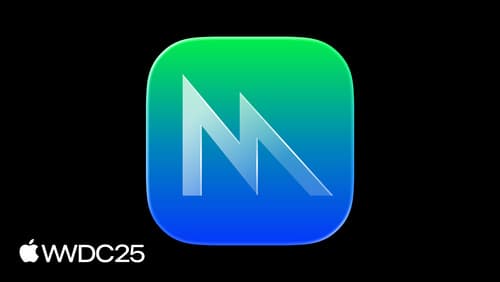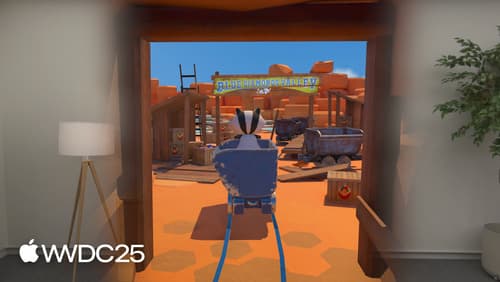iOS metal
Asked on 2025-07-01
1 search
At WWDC, Apple introduced significant updates to Metal, their low-level graphics and compute API, with the release of Metal 4. This update is designed to enhance the performance and capabilities of applications on Apple platforms, particularly for games and professional apps. Here are some key highlights:
-
Metal 4 Overview: Metal 4 is built to unlock the full performance potential of Apple Silicon, supporting devices equipped with the Apple M1 and later, as well as the A14 Bionic and later. It introduces a new command structure with explicit memory management and changes in resource management to enable richer visuals (Discover Metal 4).
-
Unified Metal Shaders: Developers can now compile shaders once and deploy them across both macOS and iOS, thanks to unified metal shaders. This makes the development process more straightforward and efficient (Port advanced games to Apple platforms).
-
MetalFX: MetalFX provides built-in solutions to boost app performance, allowing apps to deliver high resolutions at greater refresh rates. It supports frame interpolation, which helps generate intermediate frames more efficiently, enhancing the visual experience without sacrificing performance (Discover Metal 4).
-
Machine Learning Integration: Metal 4 allows seamless integration of machine learning with graphics, enabling new possibilities for apps. This includes using Metal Performance Primitives for executing complex calculations and optimizing performance on Apple Silicon (Discover Metal 4).
-
Game Mode on iOS: A new game mode is introduced to iOS, which reduces background activity and Bluetooth latency, improving input and headphone responsiveness. This mode can be automatically enabled for games on iOS 18 (Port advanced games to Apple platforms).
These updates are part of Apple's ongoing efforts to enhance the gaming and app development experience on their platforms, leveraging the power of Apple Silicon and the capabilities of Metal 4.

Discover Metal 4
Learn how to get started leveraging the powerful new features of Metal 4 in your existing Metal apps. We’ll cover how Metal enables you to get the most out of Apple silicon and program the hardware more efficiently. You’ll also learn how Metal 4 provides you with new capabilities to integrate machine learning into your Metal code.

Port advanced games to Apple platforms
Discover how simple it can be to reach players on Apple platforms worldwide. We’ll show you how to evaluate your Windows executable on Apple silicon, start your game port with code samples, convert your shader code to Metal, and bring your game to Mac, iPhone, and iPad. Explore enhanced Metal tools that understand HLSL shaders to validate, debug, and profile your ported shaders on Metal.

What’s new in Metal rendering for immersive apps
Discover the latest improvements in Metal rendering for immersive apps with Compositor Services. Learn how to add hover effects to highlight your app’s interactive elements, and how to render in higher fidelity with dynamic render quality. Find out about the new progressive immersion style. And explore how you can bring immersive experiences to macOS apps by directly rendering Metal content from Mac to Vision Pro. To get the most out of this session, first watch “Discover Metal for immersive apps” from WWDC23.
